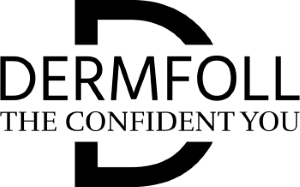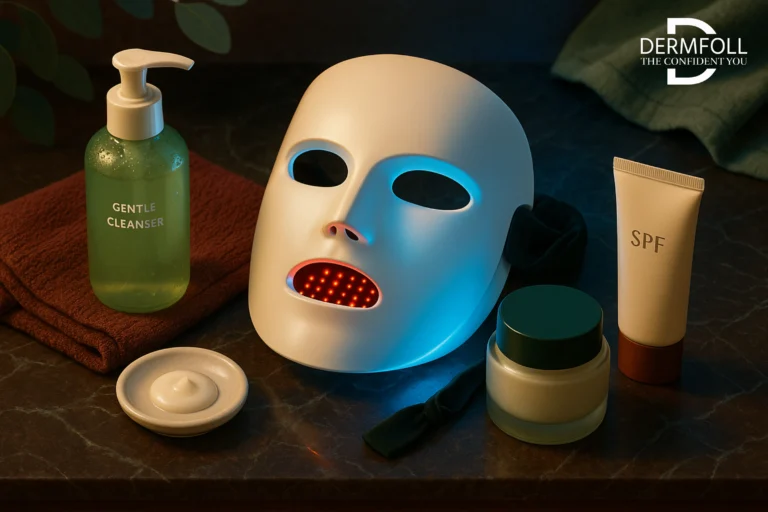Ever found yourself hovering over the “buy now” button for an at home RF skin tightening device, wondering if it’s actually doing what it promises—or worse, if it might be doing too much? Yeah, I’ve been there.
As someone who’s spent a year or two studying advanced tech in dermatology, I’ve come to appreciate the nuance. Radio frequency skin tightening devices can absolutely deliver results, but not all devices—or skin types—respond the same way.
And when we bring face tightening tools into our homes, the questions multiply: What temperatures are safe? Can they accidentally shrink fat? What’s hype and what’s fact?
This post breaks it all down. We’ll look at what happens beneath the skin when you use this face tightening tool, how at home RF skin tightening stacks up against clinic treatments, and which features matter most when choosing a radio frequency skin tightening device.
How Radio-Frequency Tightens Skin (Without Usually Touching Fat)
Radiofrequency (RF) skin treatments use heat to tighten your skin. Devices send electric waves into your skin layers, causing warmth through Joule heating. Think of it like friction from fast-moving particles inside your skin. This friction creates heat, making your skin tighter.
The heat amount depends on how your skin resists electricity (impedance). When skin reaches about 40°C to 48°C, the heat makes collagen fibers loosen.
Collagen is like elastic bands holding skin tight. At higher temperatures (55°C to 70°C), collagen tightens quickly. After treatment, your body naturally rebuilds new collagen (neocollagenesis), making skin firmer long-term. It also boosts elastin, which helps your skin stay stretchy.
But what about your facial fat? Fat can heat faster than collagen because it has higher impedance. Yet, how quickly fat heats depends on the type of RF device and how deeply it sends energy.
face tightening tool that heat deeper might reach fat layers, causing unintended volume loss. Still, properly used RF skin tightening mainly targets the dermis, not deeper fat layers.
Can At Home RF Skin Tightening Devices Reach “Fat-Melting” Temps?
Clinic-grade vs. Consumer-grade Devices
Professional (clinic-grade) radio frequency skin tightening device generate more energy and produce deeper heat. They contain sophisticated controls, such as built-in cooling systems. Which are regulated by temperature sensors. This ensures treatment safety.
Conversely, at-home RF skin tightening devices often use less power to mitigate potential harm. They are simpler and safer, but may not produce the same outcomes when considering the time it takes to see results.
How Hot is Too Hot?
According to studies, fat cells begin to die quickly at around 70°C, however fat melting can occur as early as 41°C. Professional devices tend to use high energy (13-21 J/cm²) to penetrate deeper fat layers.
Home gadgets often operate at lower power levels, which seems reasonable as this lowering the danger of fat loss. Especially considering that these devices are used by consumers from diverse backgrounds.
Safety Guidelines: Temperature and Time
Safe skin tightening procedures typically keep skin surface temperatures below 40°C. The majority of personal products are programmed at a lower heat level and energy consumption.
However, utilizing a face tightening tool for too long or too frequently in the same location can result in burns or unintended fat loss. Follow the directions carefully and discontinue immediately if the skin becomes too hot or uncomfortable.
Home RF devices can minimize undesirable fat loss by employing lower energy levels and shorter treatment times, while also safely reducing skin tightness.
Analysis of Collagen and Elastin after RF Treatment (Split-Face Study)
| Category | Collagen Content | Collagen Synthesis | Elastin Synthesis |
|---|---|---|---|
| Measurement | % in Superficial & Mid Dermis | μg Collagen/mg of Skin Biopsy | μg Elastin/mg of Skin Biopsy |
| Untreated Skin | 56.67 ± 4.74 | 12.48 ± 5.14 | 2.42 ± 0.69 |
| Treated Skin | 61.16 ± 8.97 | 16.81 ± 5.5 | 2.39 ± 0.74 |
| p-value | 0.03 | 0.003 | N/A |
| Change (%) | +7.9% | +34.7% | -1.2% |
| Significance | Significant | Significant | Not Significant |
Note: This data is from a split-face study where one side of the face was treated with the Forma™ bipolar RF device for 8 weekly sessions, and the other side served as an untreated control. The p-value < 0.05 was considered statistically significant.

Patient Satisfaction with RF Treatment for Facial Volume Loss and Laxity
| Question | Very Satisfied (%) | Satisfied (%) | Neutral (%) | Dissatisfied (%) | Very Dissatisfied (%) |
|---|---|---|---|---|---|
| Are you overall satisfied with the procedure? | 33.3% | 47.7% | 19% | 0% | 0% |
| How much has your facial skin improved? | 28.6% | 57.1% | 14.3% | 0% | 0% |
| Did you feel comfortable throughout the procedure? | 71.4% | 14.3% | 9.5% | 4.8% | 0% |
| Would you recommend the procedure to your friends? | 23.8% | 52.4% | 19% | 4.8% | 0% |
Selecting a Safe Radio Frequency Skin Tightening Device
| Feature | TriPollar STOP Vx 2 | CurrentBody Skin RF Device | NEWA Classic RF Device | Divmceknyy RF Device | Smart Electric Zinc Alloy RF |
|---|---|---|---|---|---|
| Real-time Thermistors | Yes | Yes | Yes | Yes | Yes |
| Multi-polar Tips | Yes | Yes | No | Yes | No |
| Auto Shut-Off | Yes | Yes | Yes | Yes | Yes |
| Temperature Control | Precise with sensors | Adaptive via Skin Sense Tech | Integrated control system | Intelligent chip-based | Digital screen with timer |
| Clinical Validation | Clinically tested, dermatologist recommended | FDA-cleared, dermatologist endorsed | Clinically tested, FDA-cleared | Bipolar RF with high output | Multiple therapeutic modes |
| Device Quality | Premium | High | High | Moderate | Moderate |
Important Safety Features
- Real-time thermistors: Monitor temperature during treatment to avoid overheating.
- Multi-polar tips: Distribute heat evenly, lowering the risk of burns.
- Auto-shut-off: Automatically stop the device if it reaches unsafe temperatures or loses skin contact.
Clinically Validated Models vs. “No-Name” Imports
Choose clinically validated at home rf skin tightening device, which have been verified for safety and efficacy. Preferably, the ones that have published clinical data.
Well-known brands are more likely to better safety standards. Be cautious of cheap imports or unusual brands. They frequently lack crucial RF safety measures.
Which RF Settings Correlate Most with Unintended Fat Loss?
Energy and Duty-Cycle Red Flags
Excess energy can cause more harm than good. Devices delivering more than 13 J/cm²—especially when used repeatedly and (or) for long sessions—can damage fat cells beneath the skin.
This is where moderation and good design really matter. Avoid tools that push high power without any real control.
Electrode Size and Current Density
It might seem like a small detail, but electrode size significantly affects how energy is delivered.
Smaller electrodes focus heat into a narrow area, the chances of damaging facial fat increases. Larger tips spread that heat more gently across the skin, making treatment safer and more consistent.
Case Reports: Risks for Low-BMI Faces
If you have a naturally thin face or a low BMI, you may be more susceptible to unintentional fat loss with RF treatments. Especially with high-powered devices.
In these circumstances, it’s critical to use milder settings and shorter treatment sessions. Precision is essential here, and the goal should always be to support your skin while preserving facial volume.

So—does RF melt your face? The short answer: not if used wisely. We’ve seen that at home RF skin tightening devices can be both safe and effective when used properly. With the right temperature controls, thoughtful application, and realistic expectations, these tools offer a solid alternative to clinic treatments—especially when you’re after subtle, steady improvements rather than dramatic changes overnight.
But here’s the thing—if your face is naturally lean or you’ve noticed more hollowness than you’d like, there’s more to consider. Could your favorite face tightening tool be unintentionally working against you?
Curious if your facial structure should change the way you use RF at home? Or wondering whether some devices are better suited for your specific needs?
👉 Read the next post: Facial Tightening Tools Gone Too Far? How to Spot Fat Loss and Rebuild Volume Safely








